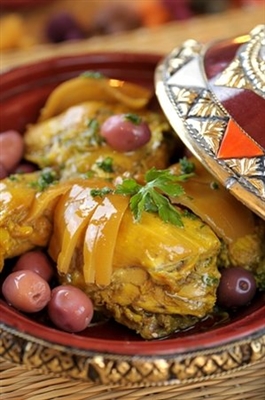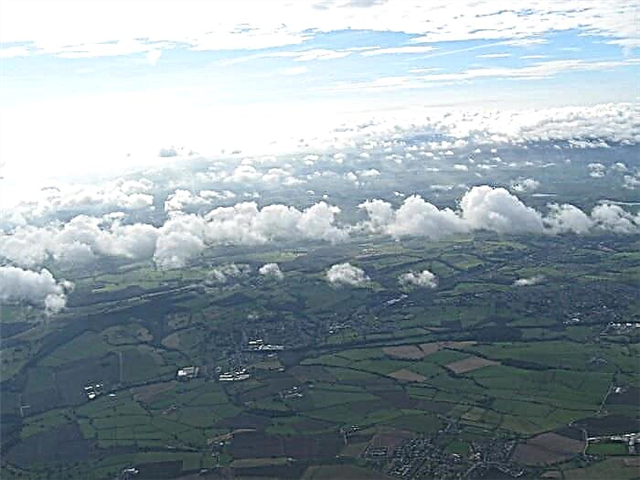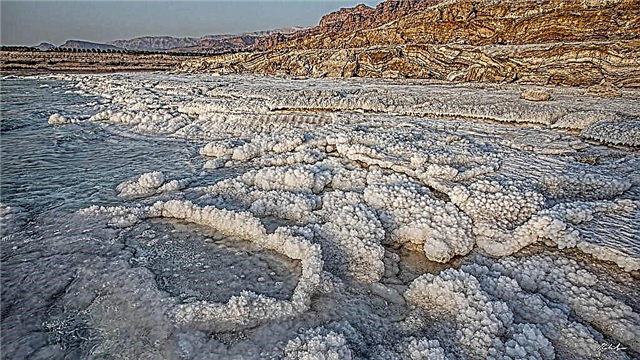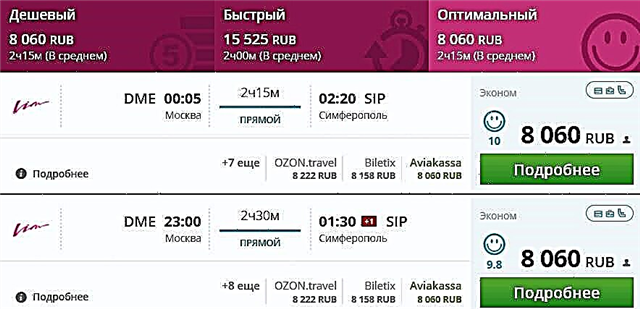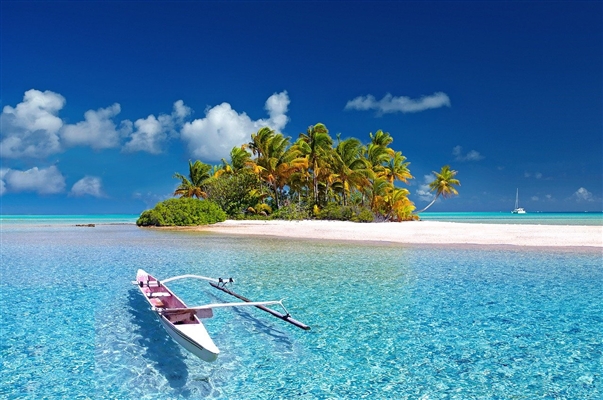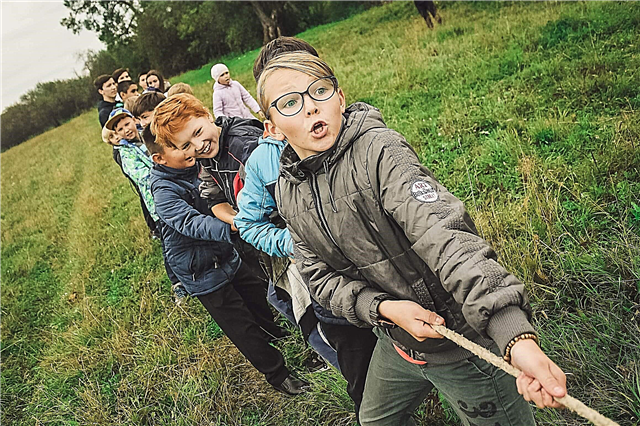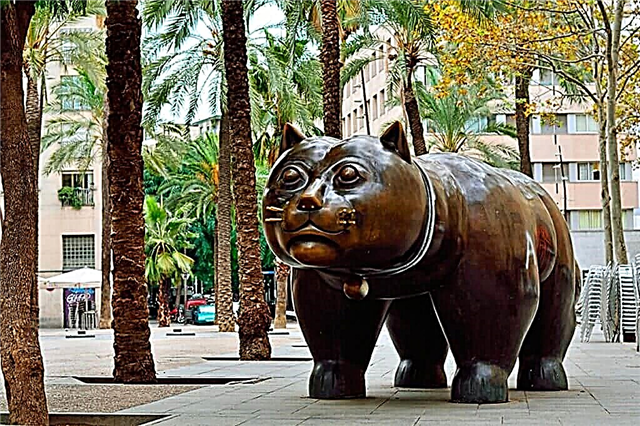Barcelona in its current form began to take shape a long time ago. Despite the change of regimes and forms of government, residents of the city have managed to preserve islets of old architecture, including monuments. However, many of them have appeared relatively recently. Their creation was timed to coincide with the World Exhibition of 1888 and the 1992 Olympic Games.
In some areas of Barcelona, there are especially many monuments and art objects. Such places include Plaza Catalunya and the Ciutadella Park or the Citadel. A distinctive feature of the city is the abundance of artificial reservoirs and fountains decorated with sculptures. The most famous one is located in the Plaza de España. And the dominant themes in sculptural compositions are abstraction and the movement for independence.
Historical and modern monuments of Barcelona
List of the city's most popular monuments and sculptures.
Monument-fountain in the Plaza of Spain
Built at the beginning of the last century. Since the creation of the monument was consistently dealt with by different masters, it combines three styles at once: Art Deco, Baroque and Greco-Roman. The fountain is located on a green island, and there is a ring road around it. The abundance of elements, from a small fence and flower beds to sculptural groups and stucco moldings, makes the fountain one of the most remarkable objects of this kind in Barcelona.

Monument to Christopher Columbus
Installed on the eve of the 1888 World's Fair. The total height of the attraction is about 60 meters. An observation deck was built at the top. The rise of tourists is carried out by an elevator operating inside the column. The very same statue of Columbus has a height of 7 meters. The great traveler indicates the direction with one hand and holds a map with the other. In addition, the monument is surrounded by bas-reliefs.

Triumphal Arch
One of the main attractions of the city. Created for the 1888 World's Fair. Indicates the entrance to a park that was formerly a citadel. Built of red brick, it is replete with detail and historical references. At the very top you can see the coat of arms of Spain, below - the coats of arms of the provinces. Although the project was carried out by Josep Vilaseca, the authorship of the sculptures that adorn the arch belongs to different masters.

Raval cat
Created by Fernando Botero in 1987 in a manner familiar to a sculptor and artist. The dimensions of the cat are impressive: height - about 2.5 meters, length - 7 meters, and weight - about 2 tons. The name of the monument is derived from the boulevard on which it is located. Due to the numerous events held in Barcelona, the cat could not find a permanent place for a long time: he wandered from street to street until he settled on the Rambla del Raval.

"Gold fish"
It is located in the port, and after the 1992 Olympics, the monument has become one of the symbols of Barcelona. Height - 35 meters, length - 56 meters. The architect Frank Gehry made his project from stainless steel with a gold sheen. The body of the fish seems to be incomplete: there is no head and tail fin. However, this is the initial idea. From some angles, the monument resembles a spaceship from a science fiction movie.

Barcelona head
The monument is made in the style of surrealism. He appeared on the city embankment in 1992. The reason was the holding of the Olympic Games in the city, so Barcelona was adorned everywhere. The author of the fifteen-meter composition is American Roy Lichtenstein. The sculptor used not the most familiar set of materials - cement and stainless steel. The result is separate elements, folded together, like pieces of a puzzle.

Monument to Rius i Taulet
Erected in 1897 in memory of one of the prominent mayors of Barcelona. Rius i Taulet made it so that the 1888 Universal Exhibition was held in Barcelona. This event led to the transformation of the city, the emergence of numerous new objects and the subsequent influx of tourists. The mayor is depicted with almost comical sideburns, but this picture is not far from his real image.

"Republic"
The sculptural composition is placed on the territory of the square of the same name. More than 50 years have passed between the creation of the sketch and the opening of the monument. In the course of work, changes were made to the original plan. Due to the changing mood in the government, the sculpture spent some time in the warehouse. The installation took place in 1990. The height of the statue depicting the Republic is 4.5 meters. The main materials are bronze and marble.

"Wounded Star"
The art object is located on the beach of San Sebastian. Created by Rebecca Horn, like many similar projects, for the 1992 Olympics. The structure consists of four cubes piled on top of each other. Although they are stable, the appearance of the monument cannot be said: "The Wounded Star" is more reminiscent of the Leaning Tower of Pisa. The sculptor dedicated her work to the city's past, which has changed significantly over the past decades.

"Smiling Shrimp"
Despite the monument's name, sculptor Javier Mariscal created a smiling Norwegian lobster, not a shrimp. However, the popular vision won out and became the official name. The master worked for a restaurant that wanted to decorate the facade for the Olympic Games. When the institution closed, the monument was taken over by the city authorities. In 2004 it was completely renovated.

Monument to Picasso
The cube is installed in the center of an artificial reservoir on the avenue of the same name. The height of its rib is 4 meters. Inside are worn antiques that come from the era of Pablo Picasso. There are also other allegorical references to the life and work of the artist. Water flows down the walls of the cube. The author of the project is Antoni Tapies. The Citadel Park is located in the immediate vicinity.

Monument to Ramon Berenguer III
It is located in the Gothic Quarter near the Chapel of St. Agatha. Young Josep Llimona finished work on the project in 1888. Its opening was timed to coincide with the World Exhibition, where the monument was awarded a gold medal. Ramon Berenguer III - was nicknamed "The Great" and represented the Barcelona house. For some time, the equestrian sculpture lay in storage, and took its current place only in the 50s of the last century.

"Woman and Bird"
The monument is located in the Joan Miró Park. It is he who is the author of this attraction. "Woman and Bird" was created in 1938. However, its official opening took place only in 1982. Previously, Joan Hardi Artigas, who had long collaborated with Miro, covered the monument with multi-colored tiles. The height of the composition is about 22 meters. Due to its unusual appearance and coloring, different meanings are put into the statue.

Monument to Raphael Kasanov
Created by Rossend Nobas by 1888. Rafael Kasanova is the national hero of Catalonia. He fought and was badly wounded during the war of liberation. The fighter for independence is just depicted at this moment: even while bleeding, he does not let go of the flag. The sculpture turned out to be very popular, copies of it were made from it in smaller sizes from different materials. Some are kept in museums.

Monument to Joan Güell
A group of sculptors worked on the creation of the landmark. The project was commissioned by local businessmen, grateful to Joan Güell for protecting the interests of Catalan industrialists. Opened in 1888, destroyed in 1936, and restored immediately after the war. The first thing that catches your eye when looking at the monument is an impressive pedestal. At its top, closer to the crown of the trees, there is a snow-white statue of Guell.
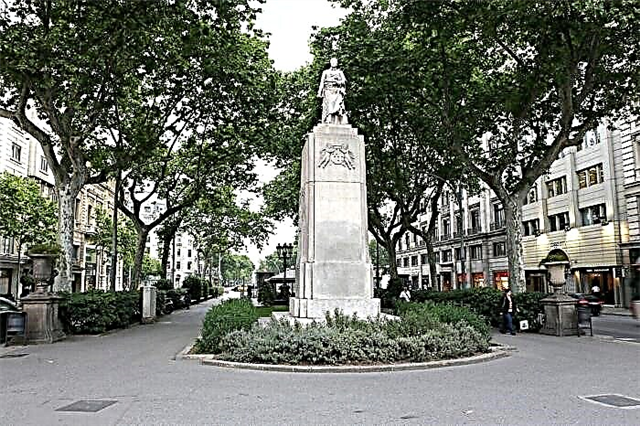
"Thinker bull"
One of the most interesting monuments in the Eixaplé area. When creating it, Josep Granier relied on the world famous "The Thinker" by Rodin. The appearance of the sculpture in 1972 was facilitated by the struggle of activists to preserve the pedestrian part of the street. In 2003, they tried to steal the "Bull".The criminals were promptly detained, the monument was not damaged and was returned to its place without restoration.

"Flirty Giraffe"
This time, Josep Grannier was inspired by the sculpture "Pauline Borghese as Venus." A monument was erected on the Rambla Catalunya in 1972, although it was created back in the 40s. Not far away is another work of the sculptor, made in a similar manner - "The Bull the Thinker". Because of the pose, the giraffe is called differently, including the rest. There is a small sign with the imprint on the pedestal.

Monument to Francesc Maciya
Opened in 1991 in honor of the President of Catalonia, who was shot by the Francoists. The author of the project is Josep Maria Subirax. The monument looks like two blocks, one piled on top of the other. They resemble inverted flights of stairs. In an abstract manner, their docking in such an unusual manner abstractly tells about the fate of a politician. In front of the composition is a small bust of Francesc Maciya.

Monument to General Prim
Installed in 1870. It can be found at the entrance to Citadel Park. Having won the competition for the best project, the sculptor Luis Puzhenar created an equestrian monument and placed it on a snow-white granite pedestal. Several significant events are associated with the general's name, including the demolition of the city's citadel and the approval of a plan for a park laid out in this place. Prima was subsequently killed during a visit to Madrid.

"Couple"
One of the most unusual and controversial monuments in the city appeared in Port Vell in 1998. The bronze composition depicts a man and a woman in love, sitting side by side and looking at the sea. Their figures are disproportionately thin and elongated. Another important feature is that the heroes of the composition have no hands. Some activists consider the monument to be mourning and suggest moving it away from tourist routes.

Monument to the book
Made in 1994 by order of the local second-hand booksellers' guild. On a silver cube-shaped pedestal, there is a blue, slightly inclined bowl. And already in it is a large, half-opened book. The art object is distinguished by the elaboration of details. Only on closer inspection is it clear that the book is not real. From a distance, thanks to the natural execution, it seems as if the pages are swaying from the wind.

"Carmela"
Decorates the area in front of the Palace of Catalan Music. The author of the monument is Jaume Plens. An exhibition of his works was held here, and Carmela was one of them. The impressive size of the head of a teenage girl was so liked by the townspeople and the city hall that they wanted to buy it from the master. But he refused the money and donated the monument to the city. The monument was left on the site where it was originally exhibited.

Monument to Frederic Soller
Installed in 1906 at the Pla del Teatra. Frederic Soller is the founder of the Catalan theater. The monument is distinguished by a large patterned pedestal. On top of it, Soller is sitting in a relaxed pose. The sculptor Agusti Cuerol used white stone and marble in his work. The sculpture and the pedestal contrast with each other not only in color, but also in the number of elements.

Monument to Dr. Robert Bartholamue
Located in the Place de Tétouan. Robert Bartolamyu was born in Mexico and then moved to Barcelona and became mayor. Many useful reforms were carried out under his leadership. The monument to the mayor was carved out of a piece of rock. It consists not only of the figure of Bartolamio, but also of other sculptures, as well as an imposing pedestal and flag. Franco wanted to destroy the composition, but it was hidden and kept in a cache until 1975.
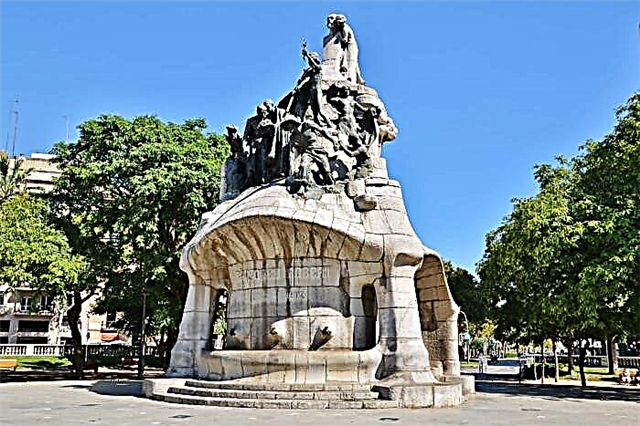
Monument to Galseran Market
Created in honor of the vice admiral of the Catalan fleet, who showed himself during the war with Genoa in the 30s of the XIV century. In the past, a monastery stood on the site of the Duke Medinaceli square. It was destroyed, and the land was transferred for further development. Among the new objects in 1851, a fountain appeared, from which a majestic column rises. At its top is the statue of Galseran Market.

Monument to Jacint Verdaguer
Created at the beginning of the last century. Dedicated to a Catalan priest who also wrote poetry. A monument was erected at the roundabout, it is surrounded by a balustrade. Three figures are placed on small pillars that enter the fence, and high reliefs depicting people and animals are stretched between them. And the sculpture of Jacint Verdager himself is placed on a column more than 20 meters high.

Monument to Antoni Gaudi
Opened in 1999. Anthony Gaudí is a famous Catalan modernist. The bronze monument is made in a realistic manner and depicts the artist in full size. The site was chosen for installation near Portal Miralles - one of the most famous works of Gaudí. It has not been completely preserved, so the sculpture is needed to remind descendants of the partially lost masterpiece.

Wire tower
It is also called "Dedication to the Casteliers". The monument is located near St. James Square. The Castelliers built living pyramids and received a monument that resembles the wire frame of the tower. The parts are twisted together, which makes the structure look light in the absence of additional fasteners. The author of the project is Anthony Liena. The height of the structure is about 26.5 meters, the area of the concrete base is 12 m².

"Matches"
They are among the monuments that appeared on the eve of the 1992 Olympics. The bright giant "Matches" were created by the American with Swedish roots Claes Oldenburg. They bend in different directions. The height of the structure is about 20 meters. The sculptor used yellow for the handle, red for the head and blue for the fire. So, intentionally or accidentally, he collected the colors of the flag of the supporters of the independence of Catalonia.

"David and Goliath"
The monument refers to the times when the Villa Olimpica district did not exist yet. Previously, the poorest people lived here. About 18 thousand people lived in barracks and slums. They were demolished for Franco's arrival in Barcelona, and then the Olympic Village was built. Anthony Liena created his project as a reminder of the fragility of everything. From a height, "David and Goliath" looks like a primitive mask worn on flimsy supports.

Silk graveyard
Located at the southern wall of the Basilica of Santa Maria del Mar. This is a mass grave created at the site of the execution of the city's defenders in 1714. Then Catalonia lost its independence and became part of Spain. Subsequently, the cemetery was urbanized, but a minimalist monument was created. An eternal flame burns at the end of the red curved stele. Nearby - an inscription-dedication in memory of the events of the past.

Monument to Narcis Monturiol
Opened in 1963 at the intersection of Diagonal Avenue and Girona Street. The work of Josep Maria Subirax is dedicated to the engineer Narcis Monturiol. The monument looks like a model of the submarine "Ictineo", "passing" through a reinforced concrete wall. The original submarine was tested at a local port in 1859. During its existence, the composition has been restored twice with the permission of the sculptor.

"Barsino"
The monument is a dedication to the Roman settlement from which today's Barcelona later grew. The visual representation of Joan Bross' project is more important than the content. Five letters of the inscription are made of bronze, one is made of aluminum. The art object was installed in 1994 on the Plaza Nova square. Despite the name, this place is the oldest in the city. In the past, there was an aqueduct that provided the area with water.

Mark
Robert Llimos created the Threshold sculpture and donated it to Atlanta, the city that hosted the Olympics after Barcelona. The image of a person in a frame, decorated with multi-colored strokes, is symbolic. It shows the diversity of races and nations. Due to the popularity of the monument, it was decided to install an analogue in the author's homeland. Only the name of the work he changed in honor of Mark - his deceased son.

"A room where it always rains"
The sculptural composition of Juan Muñoz can be found in Piazza Mar in front of San Sebastian beach. A project was created for the 1992 Olympics.The room is more like a cage located under the branches of trees. Inside there are five humanoid figures with spheres instead of the lower part of the body. The name comes from the initial idea of the author, who wanted to install a continuous irrigation system. This plan was never implemented.


